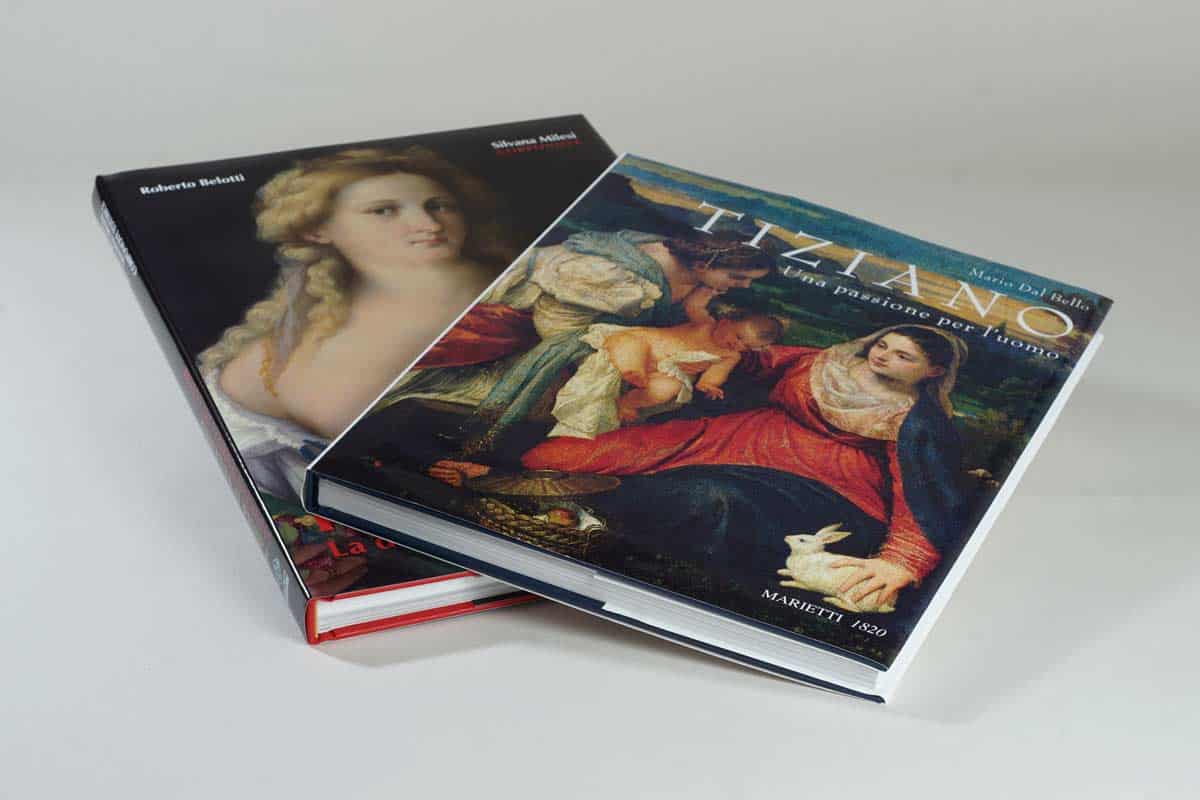FAQ
What is the best paper to use for endpapers?
Ideally, for endpapers you would use moldmade paper (140/170 gms) or, alternatively, matte-coated paper (150/170 gms). Whichever you choose, the fiber needs to be parallel to the spine.
I need to produce a hardcover volume. How do I calculate the measure of the spine and development of the cover material?
Here at Novagrafica we work for and with you: we will be able to advise you on all the necessary steps and measures to apply the perfect cover sheet to your boards.
All you need to do is tell us what kind of paper you want to use. In a very short time, we will be able to provide a PDF version of the cover material, on a 1:1 scale, with which you will then be able to assemble your cover easily and precisely.
What do you mean by ‘paper density’?
The measure of paper density is calculated by dividing the grammage (weight), expressed in Kg, over the caliper (thickness).
For example, a 100gms (0.1 Kg) sheet of paper, whose density is equal to 1, will be 0.1 mm thick. A sheet of the same size and weight but different density will also have a different caliper. E. g. a sheet of moldmade paper measuring 100 gms, whose density if equal to 1.2, will be 0.12 mm thick.
As a customer, you want to realise an unusual and unique product. What steps can you take in order to avoid problems during its production?
The first step is yours: to involve the bindery from the very start can be the best solution.
With our expertise on your side, you will save a significant amount of time and money, as we will be able to avoid any incident or delay by advising you from the start on the appropriate choice for paper, endpaper, cover sheet, and so on.
I want to laminate the cover sheet. Can I choose whichever kind of lamination?
No, different types of lamination will work with different kinds of paper.
The first thing to consider is that the grammage of the paper used for cover sheets is 130/150 gsm (for coated paper), and 115/120 gsm for other papers.
Choosing the right plastic and type of lamination is essential for a good outcome. For example…
If your sheet is brightly coloured, you want to make sure that the ink is perfectly dry before proceeding with the lamination. Moreover, it is good practice to protect it with an anti-scratch treatment.
If you are thinking of hot stamping on the cover sheet, the plastic will need to be treated twice.
Sometimes, dry plastic won’t stick to a cover: you could try wet lamination.
Are you thinking of a soft touch lamination?
Yes, but not on dark covers, as its strong electrostatic component will turn your book into a veritable magnet for dust.
We also advise against soft touch lamination for paperback covers, as they might result in unsightly marks and problems on the tail.





